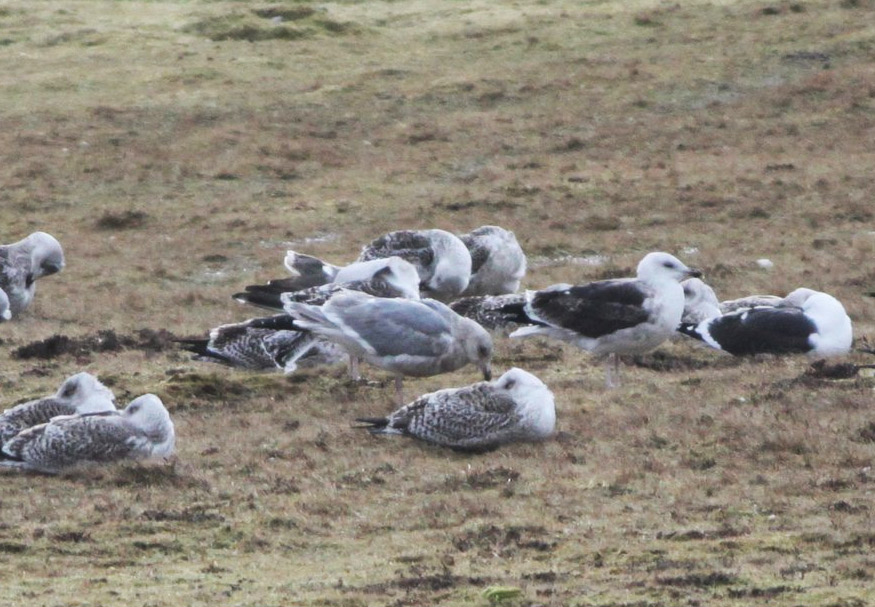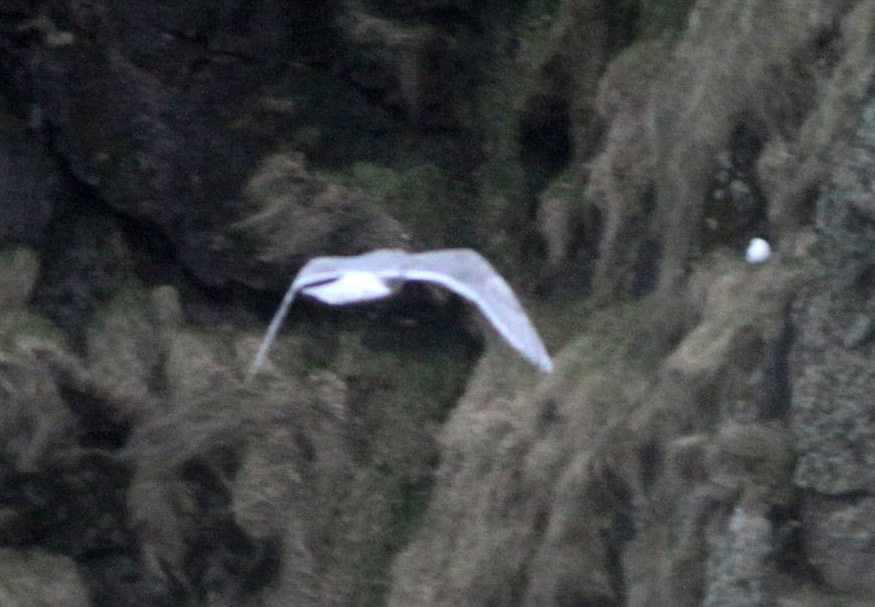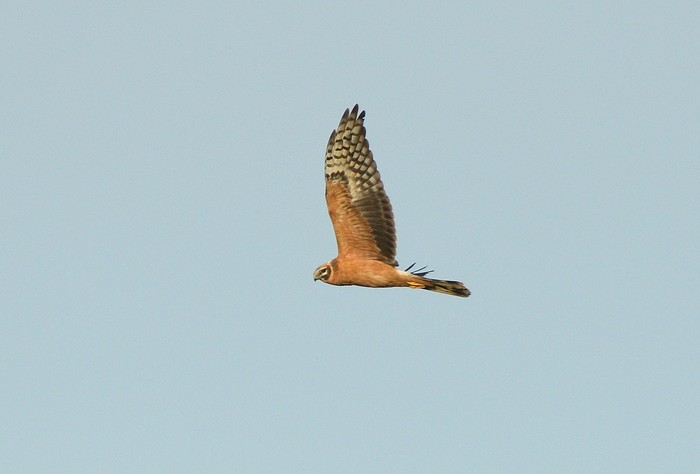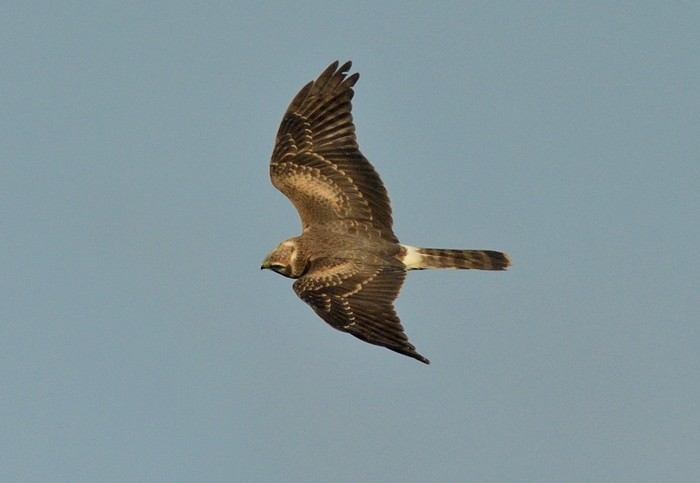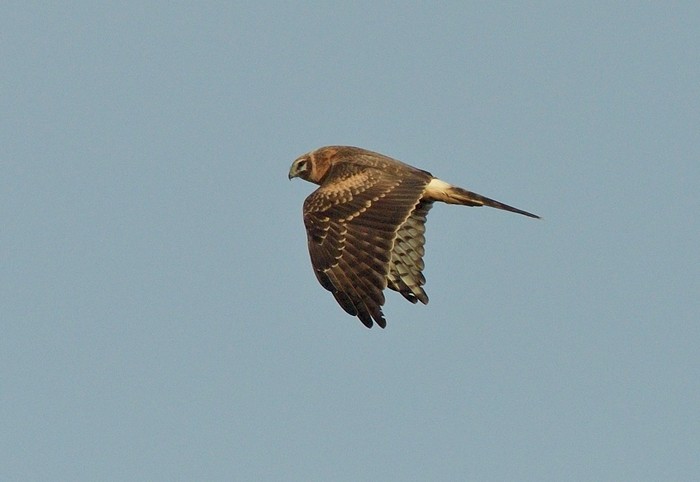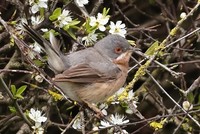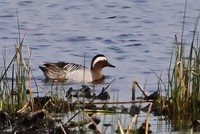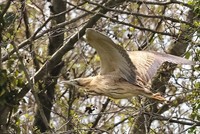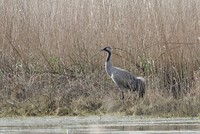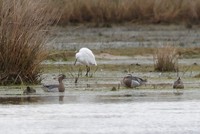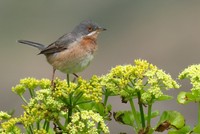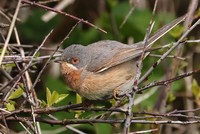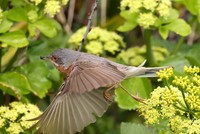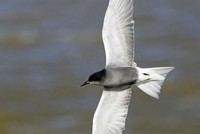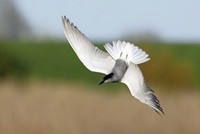Weekly birding round-up: 1 - 7 Mar 2017
You’ll be delighted to hear that there’s no self-indulgent “state of the union” mumblings this week - birds, birds, birds and nothing more.
Storm Doris was replaced by Storm Ewan this week but his effects were rather less torrid than the previous offerings of her ladyship - some snow fell, it was sunny, it was windy, it was rainy, it was mizzly, it was dreary. It was early March. What else did you expect?
The week began with Ewan’s waggy tail popping snow across parts of the northwest of England along with parts of Scotland too as a slightly chillier edge to the weather was fairly obvious. The winds were from the west and pretty fresh too but as the weekend approached, and after a brief return of another band of inclementness that trundled from south to north, dragging in more heavy rain, some more snow across central and northern Scotland, along with cold east winds, the winds snuck slightly back to the southwest and brought murk and grot along with them.
Sunshine and showers were pretty much the order of the day for the rest of the week (the review’s final day was a glorious sun-packed one in north Norfolk) - all a bit nothing-y really, words which certainly don’t apply to this week’s star attraction.
Well that didn’t take long…one week in the hot seat and the very first bird mused upon as a “one to watch” for this week hurtled in to the rare-air on what was looking like a rather average, ever-so-slightly dull early March Thursday afternoon.
It wasn’t that long ago that Glaucous-winged Gull would only ever have been viewed as the stuff of legend, a fantasy larid for those who dreamt too much of the off-beat monster rare. La(rid)-la-la-Land if you so please.
All that has changed as the world has opened up avenues for High Arctic and Pacific species, some of which are now almost part of the scenery - along with those astounding auks & alcids Tufted Puffin and the marvellous Long-billed Murrelet have come a species or two which are almost seen as standard now, Pacific Diver being the main one with, incredibly, Glaucous-winged Gull not far behind…
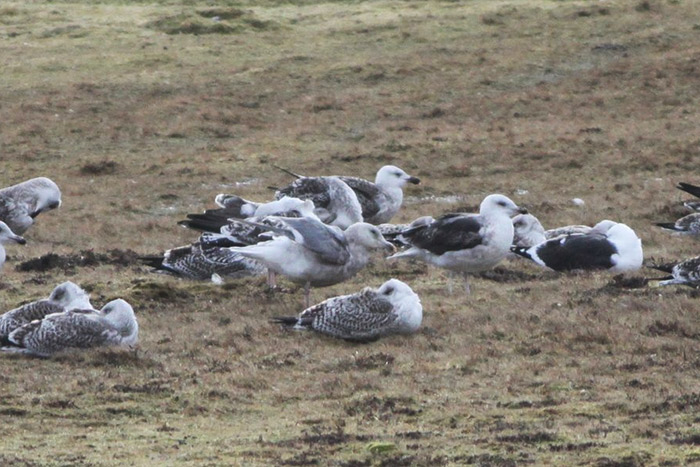
This week’s offering came courtesy of a presumed third-winter that spent some time loitering amongst a few beefy Great Black-backs on Fair Isle through the afternoon of 2nd - a remarkable island first and, obviously, a first for not only the Shetland chain but also for Scotland too.
The Glaucous-winged Gull is the latest in a somewhat eclectic mix of Fair Isle firsts - last autumn, the inevitable Siberian Accentor made the grade and that had followed on from Great White Egret and, the previous year, Little Egret. The 400 mark edges closer and closer.
Those who have been regular readers of these rare-laced ramblings across the last few years will perhaps remember my love of symmetry where records are concerned and this week’s Fair Isle find is no different - as was mentioned at the end of last week’s weekly review, most people’s first opportunity to connect and engage with this brutish Pacific beast came between March 2nd-5th 2007 at Ferryside in Carmarthenshire; the same bird had already spent a few days at the end of the previous year around Gloucester’s Hempstead tip.
…and now, ten years to the very day, a bird of exactly the same age as that well-travelled wanderer makes itself known on Britain’s premier rarity island.
The Fair Isle Glaucous-winged Gull loafed around the island for much of the afternoon on 2nd but never seemed to allow close approach (given where it was, a top a cliff, that’s perhaps no real surprise). The images obtained of the rather fine looking 3w bird all appeared to favour purity rather than a naughty hybrid (the look-a-likes, freaks and weirdos in the western USA and Japan - and the high north where the Viking Gull lurks - are mind-boggling).
Assuming the learned men of the BBRC find no issues within the submission, this will become only the third Glaucous-winged Gull for Britain and the fourth for Britain and Ireland as a whole. That already mentioned 1st originally spent December 15th-16th 2006 in Gloucestershire before the first of three relocations across the following five months; the first in west Wales on March 2nd-5th, then back at the Gloucester tip on March 16th-17th before a final showing off to the east, at Beddington, on the south-eastern fringe of London, on April 18th 2007.
Remarkably, Britain’s second (and a far easier bird to see) followed the very next year, a superb adult located in Cleveland on New Year’s Eve 2008 which remained in the area for the first ten days of 2009. A sizeable gap followed until the early part of last year when Irish birders (and many from further afield too) were able to revel in some fantastic views of another super adult, this one at Castletown Bearhaven, in County Cork, a bird that lingered until early May.
Glaucous-winged Gull and Slaty-backed Gull have become part of the furniture in not a very long time at all - they remain supreme rarities but with four examples now for the former and already three for the latter, they are now to be “expected” (as much as you can expect a long-haul “over the top” vagrant which wasn’t on the radar a decade and a half ago). Like Thayer’s Gull there’s perhaps every chance of further records, thanks to something happening within their range (a climate change related hole through previously impassable routes opening up maybe?) and also increased observer awareness. It is now down to Vega Gull to follow suit…
An all together less challenging identification conundrum was offered up by the singing male Blue Rock Thrush who remained amongst the solar panels and rooftops of Stow-in-the-Wold (Gloucestershire) through to 7th.
A firm favourite of the winter, this lovely looking thing is now (like a couple of other wintering rares in a similar vein) the subject of the “when’s he going to go” guessing game. Odds on he’ll be there for a week or two yet, but if some nice early spring weather looms, maybe he’ll be off…
Another extraordinary songster has been the male Pine Bunting at Milton Creek, near Sittingbourne (Kent) and, after a blank week and more, he popped up again as still being present on March 1st.
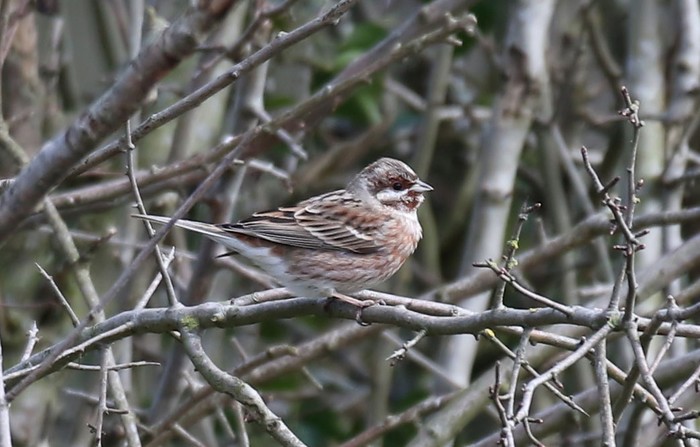
This county first has been a popular draw for those birders in southern England, the site being rather to closer for many than the journey to North Yorkshire where the more frequently reported male remained at Dunnington throughout the week, showing well at times too.
As with the BRT above, it will be interesting to see when these two depart the scene, odds are on sometime before the end of March or maybe early April. Let’s see how that goes.
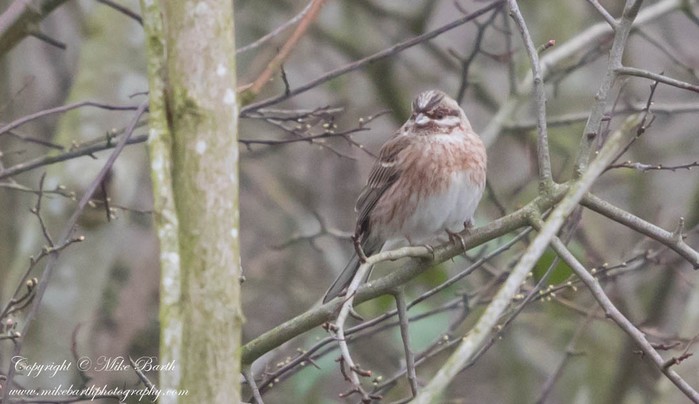
In the sexy stakes, poor old American Coot doesn’t have a whole lot to offer, especially when up against a couple of dapper male buntings, the blue-black housing estate beastie and the beefy beauty on a far flung northern island. But, and it is a sizeable but, American Coot remains an extremely rare bird here and it can’t help it’s somewhat frumpy look.
The wintering bird found on Loch nam Feithean, on the Balranald RSPB reserve on North Uist last November hasn’t had many reports to brag about this year but the 1st of the new month saw mention made of the continuing semi-residence for this Transatlantic wanderer and he or she was still ship-shape on 3rd-5th as well.
This is around the 12th record of the species for Britain & Ireland and follows on from a wintering bird on the very same stretch of Hebridean water in November 2014 to April 2015. The arrival date for both was almost the same (November 16th for 2014 individual and November 11th for the current one) so how close will the departure date be? All eyes on April 3rd.
As the week drew to a close, the second new juvenile Pacific Diver of the winter reappeared off the south Devon coast - seen again off Brixham on 7th, the first reportes since discovery back in mid-February.
Moving from the southwest to the northeast of England now and to Northumberland where, at East Chevington NWT, their popular juvenile Pacific Diver remained very much part of the furniture for much of the past week, until 7th.
There’s been nothing other than a snippet of negative news for the Cornish adult this week, but having two or three Pacific Divers to play with, was much like the gross gull that starts the week’s big birds, unthinkable at the start of the 2000’s.
Not too far away, within the same county was the drake Black Scoter who bobbed about in the North Sea, still off Goswick until 4th. A fine Northumbrian double still on offer then, and an almost unthinkable combo just a few years ago.
We’ll drop from Northumberland to Cleveland via a swift detour to the stunning coast of County Kerry by way of mentioning the Ireland’s returning “first record” of the same Nearctic species - the drake Black Scoter noted again off Rossbeigh on 3rd, only the fourth time its been mentioned this year and only the sixth since reappearing in October.
Originally seen in January 2015, this particular Irish scoter first has behaved himself by returning back to his wintering station in the following two years since discovery. The same couldn’t be said for the sublime Stejneger’s Scoter that graced the very same bay six years ago this month. He may have gone to Scotland or he may have gone to Spain, but he just didn’t seem to enjoy the Irish west coast that much - the foolish fellow!
Having arrived on October 27th last year, the wintering male Eastern Black Redstart at Skinningrove (Cleveland) still hasn’t torn himself away from his little northeastern bolt hole - he’s made it to March (still on site to 7th) and like others rarities in and around these parts, it could soon be a “??? ???????!” to who-knows-where.
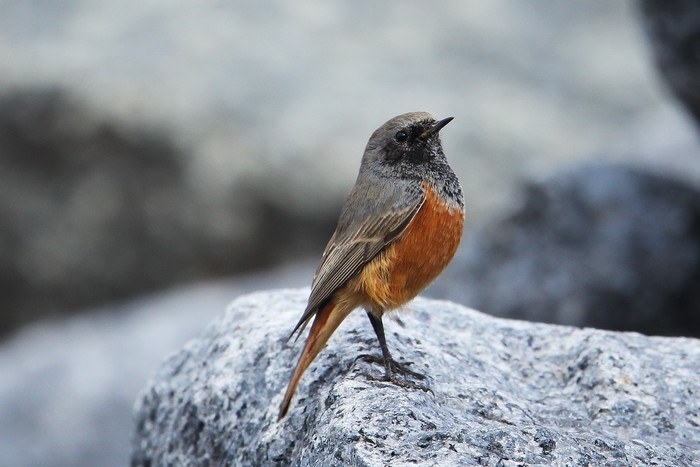
For now, he’s sitting pretty on the jetty - maybe he’s just gonna stay put until he’s been split.
…not having to wait for the deed to be done anymore is Orkney’s magnificent Grey Ghost ~ the male Northern Harrier popped up again on North Ronaldsay on 6th-7th after almost a week out of the picture. He’ll be away soon, Shetland birders will be keeping their eyes open, just in case.
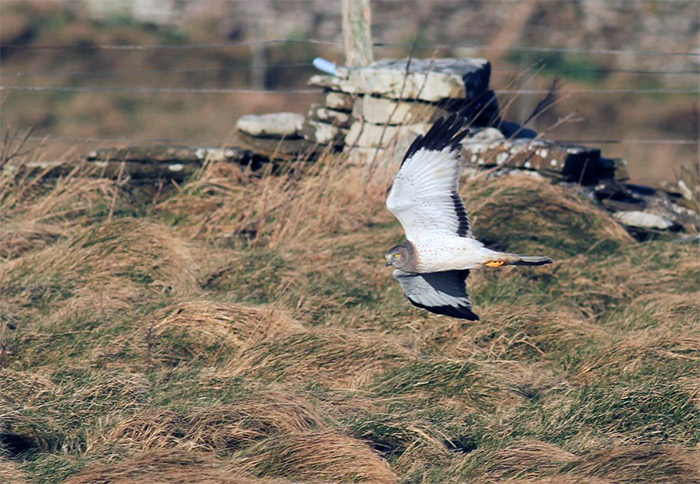
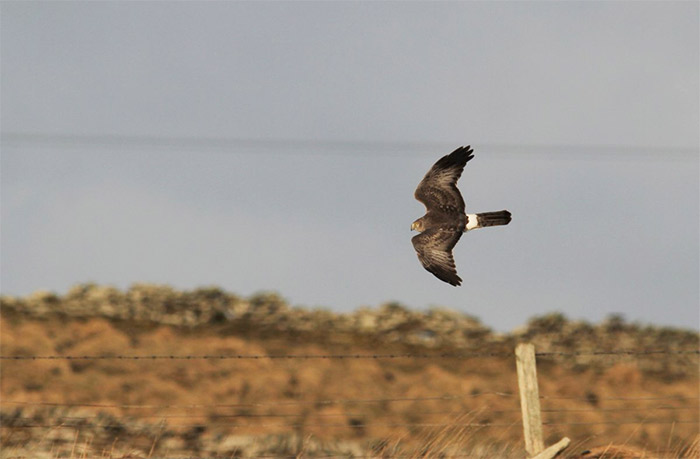
Seems as though whilst I’ve been wandering the Norfolk hedgerows for an inordinate amount of time, I’d missed the fact that there was now a mini-summation of the birds that loiter elsewhere within the enormo-confines of the Western Palearctic - so for those of you with an interest in what’s what in Morocco, Kuwait and Russia here’s what’s what this week.
Well, by the look of it, there’s not much to offer up - the metal-ringed American Royal Tern is of genuine interest to many here especially when it ups sticks and heads to Dorset or Hampshire, and it remained out on the lovely island of Guernsey at the start of the week and on to 6th. Oh if only there was a British one that would behave like this one…
Rather further to the south (even further down than the Canaries), what is potentially the Western P’s second-ever White-throated Bee-eater remained at Dakhla, in the Western Sahara (to the NW of Mauritania) all week. Astonishingly beautiful birds, this one suffered from tatty wings - even a bird over 2000 miles from London has questions asked about its provenance. Elsewhere, Golden Nightjar drew WP listers to Adrar Sottouf where a flock of Sudan Golden Sparrows were also of note.
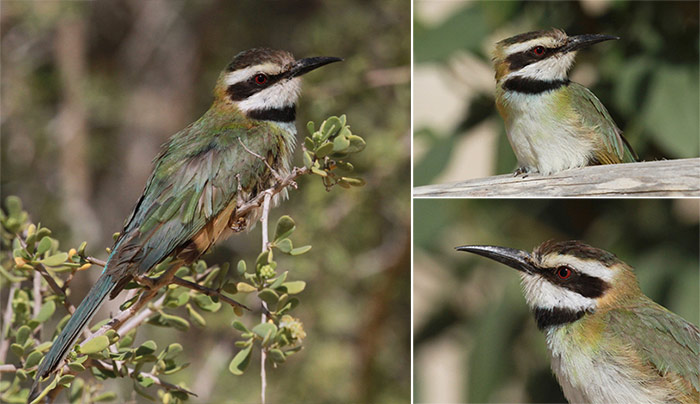
Elsewhere, back a little closer to home, Spain continued to offer up the rather senior adult Thayer’s Gull still at San Cibrao, Galicia to 3rd and also the Steppe Grey Shrike that remained at Coria del Ria, at Canal del Guadaria, Sevilla until 2nd.
Norwegian birders (and those from elsewhere in the Western Palearctic too) would have been interested in news of the continuing presence of the striking male Yellow-throated Bunting in Nordland, at Gravdal to 2nd (with an Oriental Turtle Dove still in Rogland to the same date) while a new Siberian Accentor appeared at Slettmoen, Hedmark from around 4th.
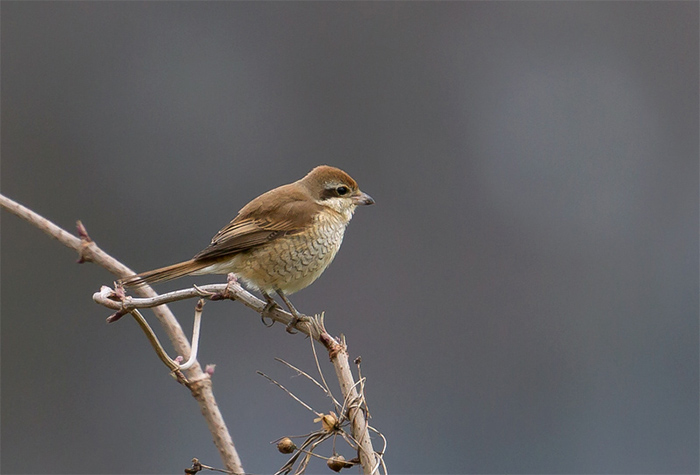
Across the North Sea in the Netherlands, the drake Baikal Teal and the 1w Blyth’s Pipit and (so close to Norfolk!) Brown Shrike remained for much of the week. Another Baikal Teal was discovered at Gonyu, in Hungary, on 5th.
Let’s start off in Lothian where the elusive but rather beautiful juvenile White-billed Diver emerged once more off Ferry Ness on 1st. Having not been noted since February 12th you’d wonder where its been, but it’s a fair old coastline and it could easily have gone wandering to the north or south or even out to the east.
The sub-adult Pomarine Skua loafed across Mount’s Bay (Cornwall) through until 4th while one of the week’s two Balearic Shearwaters was also seen in Cornwall, off Lamorna Cove on 2nd with the others off the south Devon coast, at Slapton Sands, on 4th with two from Thurlestone on 5th. The 1st of the month saw the week’s only Little Auk logged, seen from the Rathlin Island ferry in County Antrim.
The winter’s Cattle Egret invasion remains a major part of the weekly proceedings as numbers remained high throughout the course of the past seven days. Some 43-48 remained in Cornwall, with groups of 18 at St. Clement (on 1st) and 16 at the Loe Pool roost, near Helston on 4th the prime numbers. A further eight remained on the Gannel Estuary, Newquay for much of the week, five were at Caerhays Castle on 7th and a lone bird was seen at Tehidy, near Camborne on 2nd.
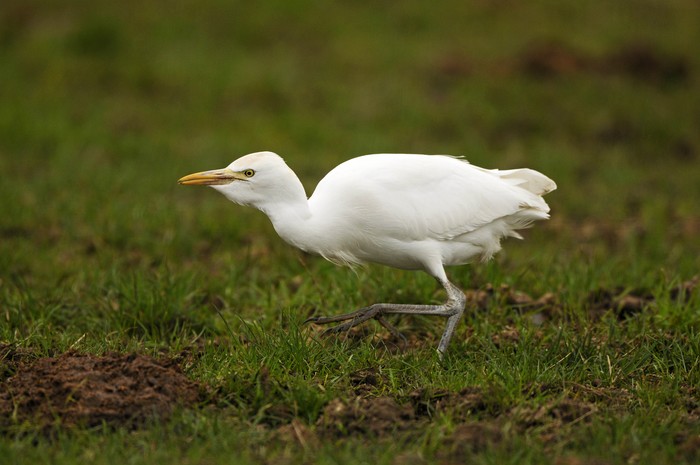
In south Devon it was hard to judge just how many were present, the likelihood of small splinter groups also being on the cards. The highest count was 11 near Noss Mayo on 2nd with seven at Totnes on 7th and fives were at both Teigngrace and South Milton through the week with a four was at Weare Giffard on 2nd and two at Waddeton on 3rd (maybe as many as 32 in all). Unrelated were the five at Fremington Quay, in the north of the county, on 7th. Dorset could manage 13 this week, with three remaining at Portesham to the start of the week with two again at Abbotsbury on 2nd and eight were again at Litton Cheney on 6th. A couple of singles lurked in Somerset to bring the southwest tally to around the 90-95 mark (if all were different).
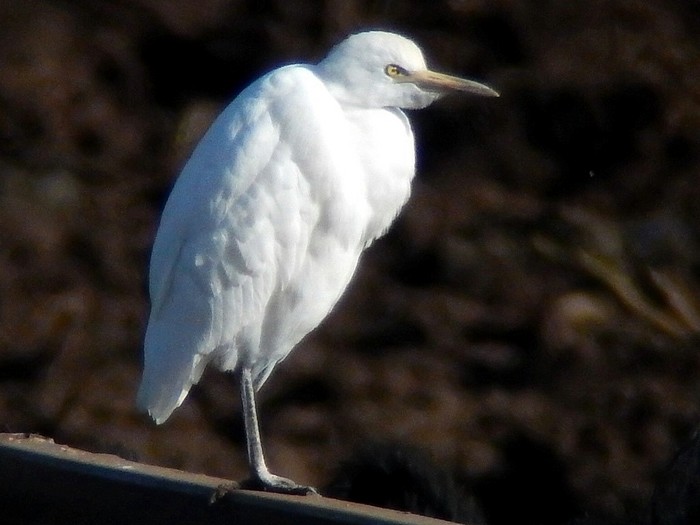
The South Midlands continued to offer up three in Worcestershire (near Woodborough) to 2nd while six lingered in Gloucestershire, while the West Midlands saw a report of three birds come from Polesworth (Warwickshire) on 3rd. Three singles stayed in the southeast of England (in Hampshire, on the Isle of Wight and in Buckinghamshire). Elsewhere, single Cattle Egret remained in Suffolk and Lincolnshire while at least seven were still in Lancashire (including six again at Birkdale) throughout the week, with further Celtic birds seen in Scotland, still at Stranraer (Dumfries & Galloway) to 6th, in Wales, at Newport (Pembrokeshire) to 4th and an Irish 11 comprising of half a dozen still at Tomhaggard (Co. Wexford) with trio still near Clonakilty (Co. Cork) and a brace near Dungarvan (Co. Waterford) all to 4th at least (making it some 126-132 in all).
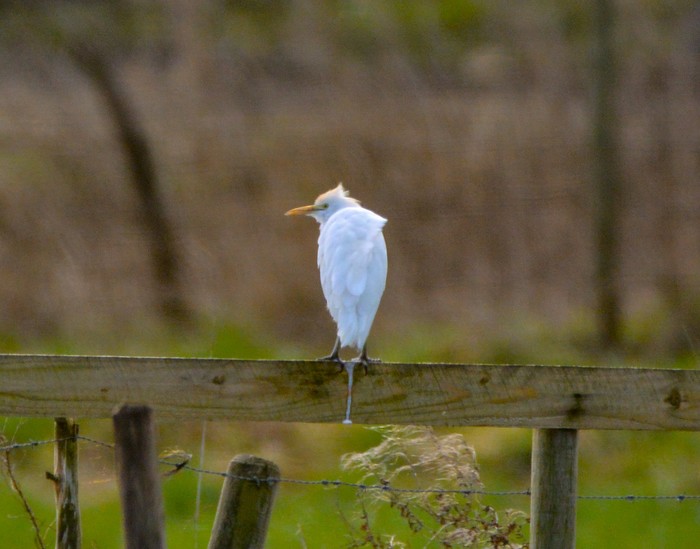
The new week began with the Glossy Ibis being noted again at Wanlip Meadows LRWT (Leicestershire) on 1st and it was one of four birds logged across the last seven days, others remaining at Ely (Cambridgeshire) to 2nd, Thorncross (Isle of Wight) to 6th and Ham Wall RSPB (Somerset) to 7th.
Around 30 Spoonbills including 25 at two southwestern sites, nine at Sherpa Marsh, near Braunton (Devon) and 16 at Arne RSPB (Dorset), all on 2nd, with five already loitering with intent at Holkham Freshmarsh (Norfolk) through the week while some 50 Great White Egrets were spread far and wide in, almost entirely, ones and twos.
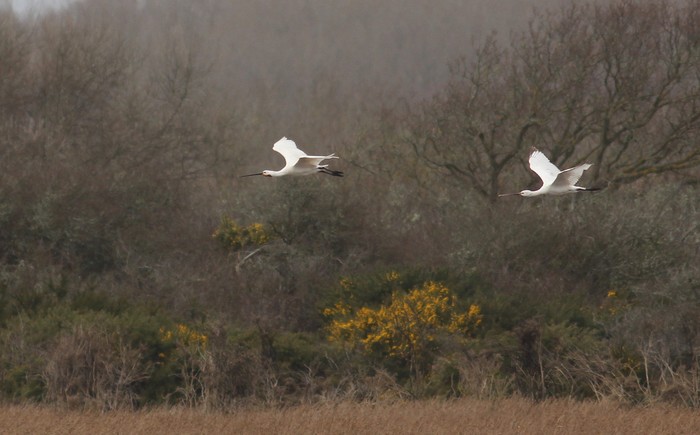
Amazingly, that brilliant Kentish flock of 36 “proper” Common Cranes failed to resurface this week (the assumption being they set a course back out across the Channel and regained their favoured migration route over mainland Europe) so we’re primarily down to the old faithfuls once again; in Broadland, five birds were near Ludham on 1st (and around 15 more were near Clippesby later in the week), 10 were at Eldernell (Cambridgeshire) on 2nd and seven remained around Lakenheath Fen RSPB (Suffolk) to 5th. Elsewhere, singletons was still on the Isle of Sheppey (Kent) to 5th, another flew over Hardham (West Sussex) on 6th with a third loner over Stokeford (Dorset) and then Exminster Marshes RSPB (Devon) on 7th with two more over Frampton Marsh RSPB (Lincolnshire) to 4th.
On Islay, at least five Richardson’s Cackling Geese were recorded around the island on 3rd; two were south of Port Charlotte, another duo were Esknish and a loner was at Mull of Oa while in Ireland, two Canada Goose sp., were with the Whooper flock at Standfield, near Dundalk (Co. Louth) on 2nd.
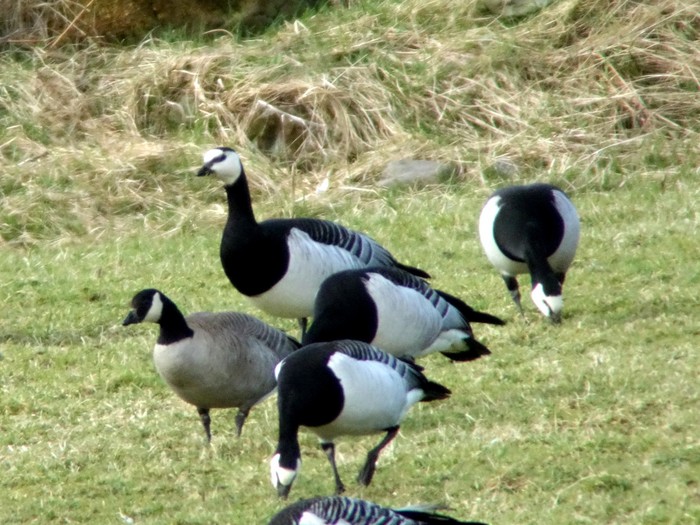
Still lurking in Lancashire was the former Norfolk Todd’s Canada Goose - noted again amongst the Pinks at Crossens Outer Marsh on 1st and 4th.
Also in the northwestern county, the blue Lesser Snow Goose which was still with the local Greylags at Nateby to 4th.
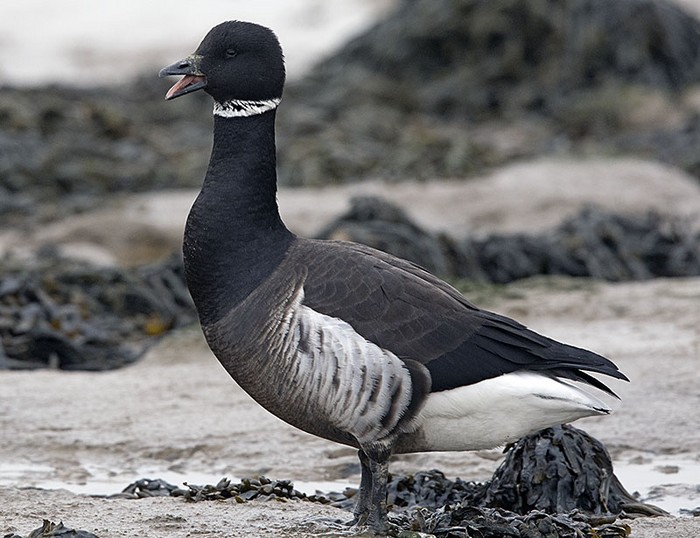
A first-winter and adult Black Brant were mentioned on 2nd at South Swale NNR (Kent) with three or four other singles noted; on 3rd birds were noted at Hayling Island (Hampshire) and Kirkby-le-Soken (Essex) and another adult in the same county was seen at West Mersea on 4th. The adult in East Yorkshire remained at Kilnsea until 4th as well.
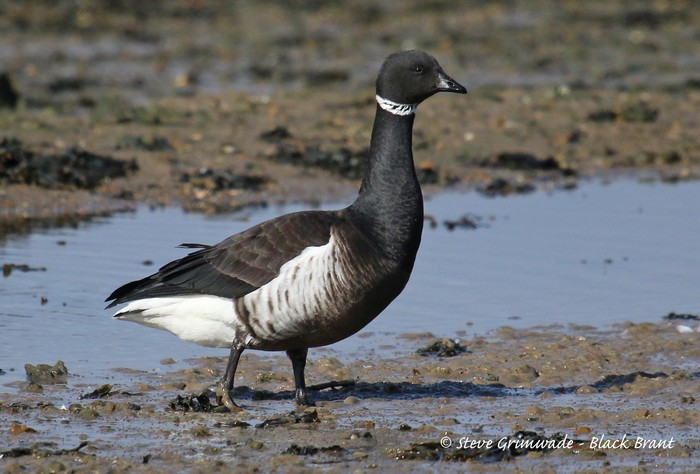
The drake Black Duck remained through until at least 4th at Strontian (Highland) and there was also no change for the two drake Lesser Scaups recorded this week, still at Loch of Boardhouse, Birsay (Orkney) to 4th and Dozmary Pool (Cornwall) to 6th.
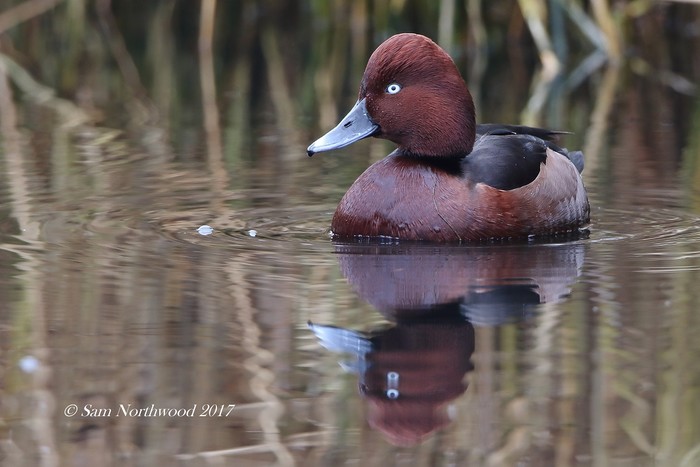
I can’t quite bring myself to discuss the resident Durham drake Ferruginous Duck in too much detail but he’s the only one reported this week (still on site at Washington WWT to 4th).
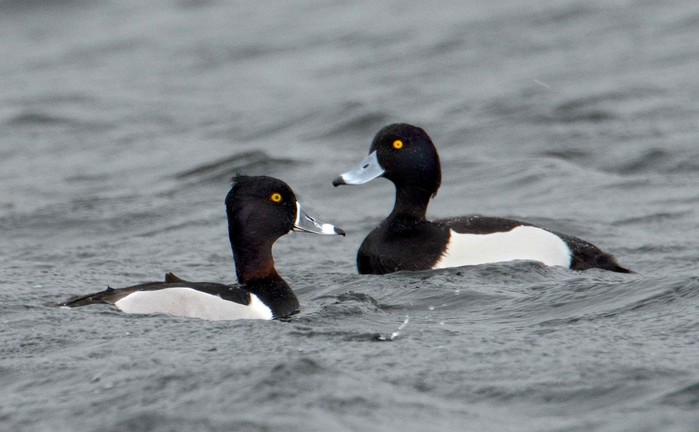
Ireland was represented by five Ring-necked Ducks this week, two drakes remained on Knockaderry Reservoir (Co. Waterford) to 4th, a new drake was found on Lough Neagh (Co. Armagh) on 4th-5th while an old drake remained at Union Hall (Co. Cork) to 5th at least. Lastly, the female was again noted at Tuosist (Co. Kerry) on 6th.
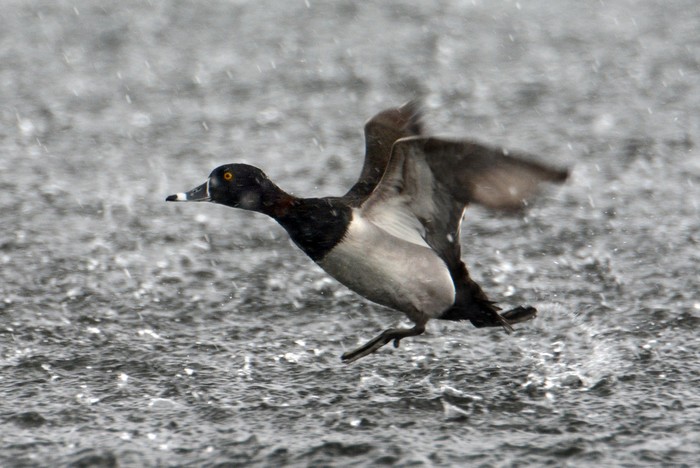
Scotland’s usual lone drake was at Pitlochry (Perth & Kinross) to 3rd and a new drake was seen on Orkney, at Loch of Clumly, Mainland on 3rd-4th with the countyr’s third, another drake, remained at Carlingwark Loch to 6th. In Wales, the female Ring-necked Ducks found last month at Trisant (Ceredigion) was seen again on 4th while the two English birds were both familiar faces; the Dungeness drake and Paxton Pits duck still on their respective sites until 7th.
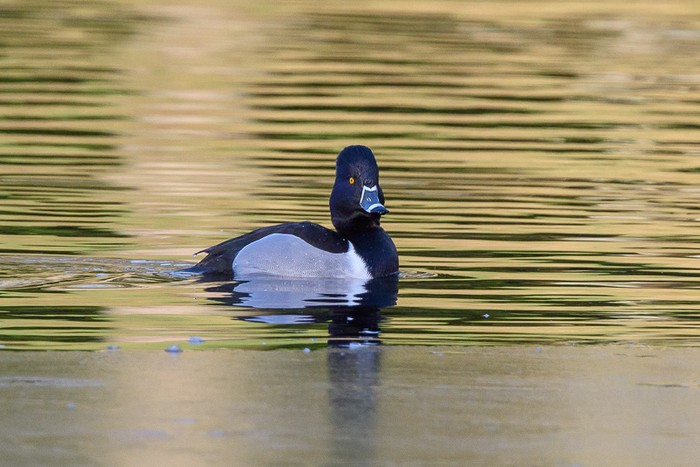
Four American Wigeons kicked the new week off as still present on the first of the month; drakes still at Grindon Lough (Northumberland), South Kessock, Inverness (Highland) and Southannon Sands (Ayrshire) while the sharp-eyed find of the young female at Grimley (Worcestershire) continued to draw interested parties. The long-staying drake in Udale Bay (Highland) was noted to 2nd and the drake on the Gann Estuary (Pembrokeshire) was seen through to at least 4th, the same date seeing a new drake located in the bay at Dundrum (Co. Down). Back to Highland for the 8th (and final) one of the week, where at Tain the drake was seen through to 5th.
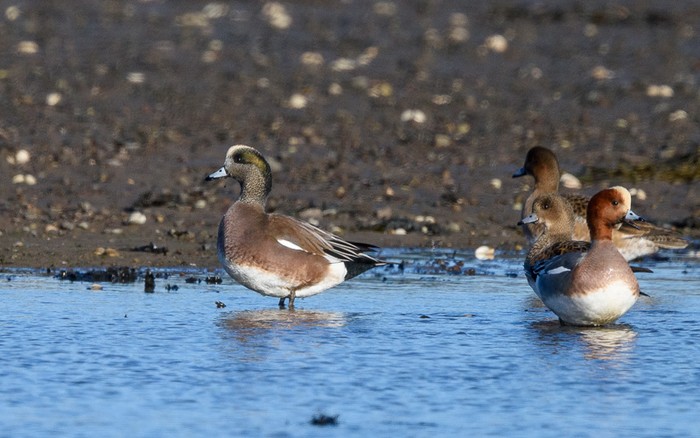
Scotland was the stronghold for drake Green-winged Teals this week, half a dozen recorded, three of them on Orkney - seen on Mainland, at Loch of Skaill and also Loch of Clumly with another on Westray, at Loch of Burness, all on 3rd. Regular returnees were at Caerlaverock WWT (Dumfries & Galloway) on 1st and Loch Flemington (Highland) on 5th with another seen at Loch Gruinart RSPB, Islay (Argyll & Bute) on 1st-6th.
Four further GWTs were noted, all remnants from recent times; at Greylake RSPB (Somerset) to 2nd, both Ashleworth Ham NR (Gloucestershire) and Lytchett Bay (Dorset) to 6th and Ballymena (Co. Antrim) to 7th.
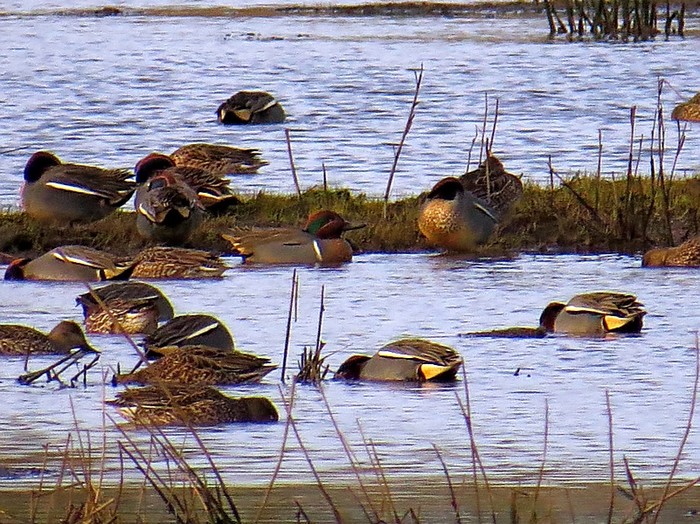
Ireland hosted five Surf Scoters through the past few days, the lone drake was still at Murvagh (Co. Donegal) on 1st and he was followed by two (one a drake) off Reenroe (Co. Kerry) on to 4th and another twosome (one a drake) off The Hermitage (Co. Louth) on 5th (with two drakes on 6th). The only others seen were another two (one a drake) off Musselburgh (Lothian), also to 5th but with a second drake on 6th.
Shetland’s Killdeer was still sitting pretty at Sandwick, south Mainland through until 5th - it could be there a while yet too…
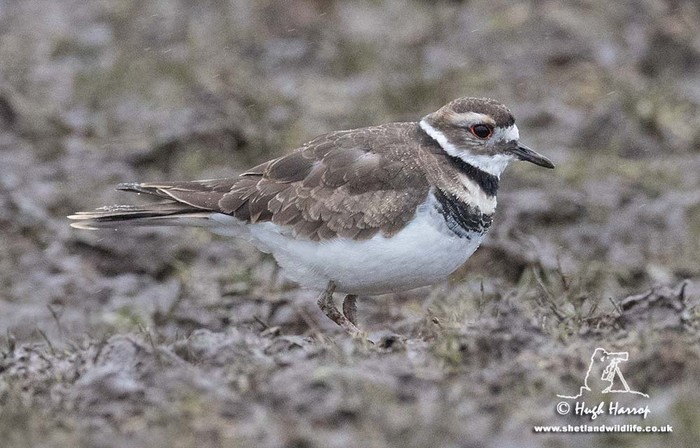
Making a reappearance in the roundup was the wintering 1w Long-billed Dowitcher that has found Wexford’s Tacumshin to its liking this past few months; it was still present on 5th (having last been noted at the end of January).
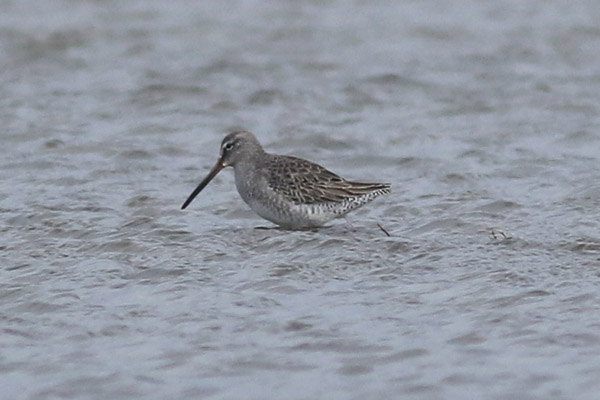
There was one other Nearctic winterer to report, the Dorset Lesser Yellowlegs still in Lytchett Bay for much of the week.
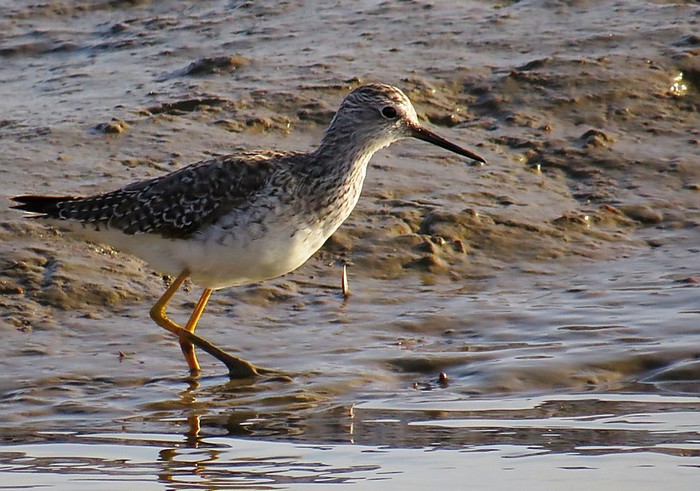
Just one other shorebird to mention before heading to other parts, a Dotterel reported amongst the wintering Goldies at Frampton Marsh RSPB (Lincolnshire) on 4th.
St. Piran’s Day was a decent one for Cornish flag bearers with an interest in the finer things in life - and there’s no finer thing in life than a good, rare gull and Kernow came up trumps with two newbies on 5th.
A first-winter American Herring Gull was reported from the fields around Polgigga (to date there are just five accepted records of the species for the county, the most recent being in 2007 but there have been others, photographed others, since of course) while also new on the same day was the rather more showy first-winter Bonaparte’s Gull that appeared on an old gull-watching favourite haunt, at the boating lake at Helston (this bird could end being the 50th county record) where it stayed to 7th.
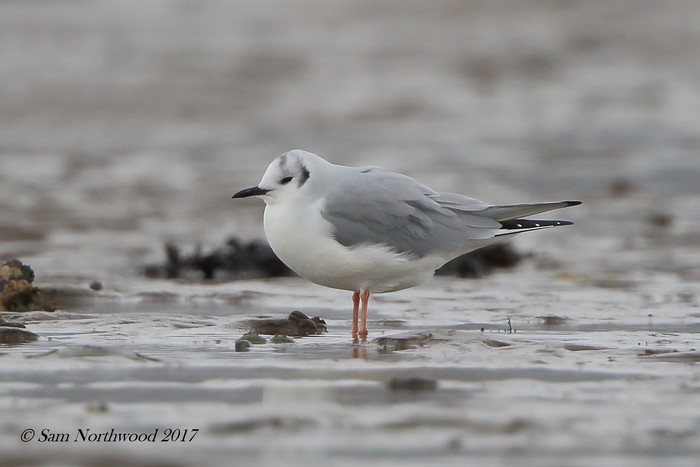
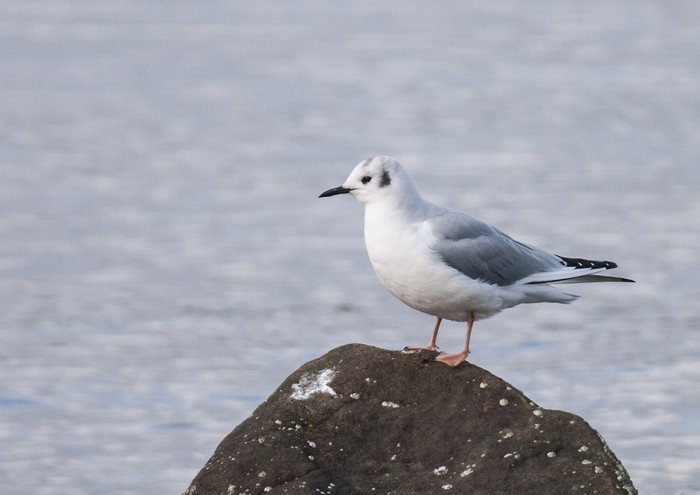
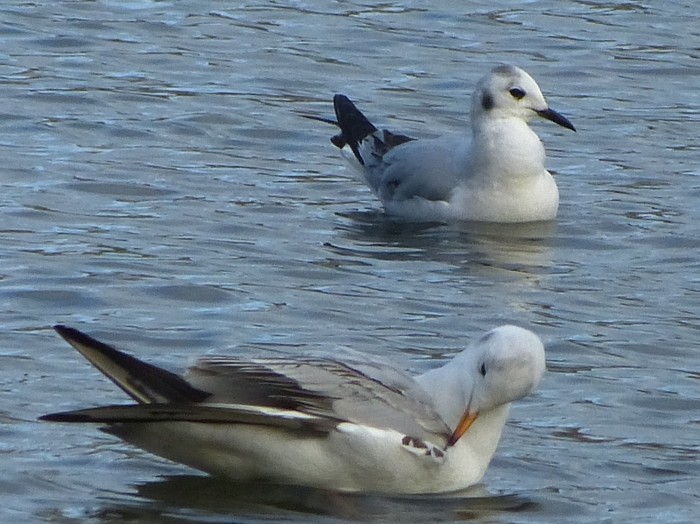
The second Bonaparte’s Gull was still being seen in Clyde, still near Gourock until 7th.
The second Bonaparte’s Gull was still being seen in Clyde, still near Gourock until 7th while the week’s third was back County Cork, seen on the beach at Coolcower.
Half a dozen Irish Ring-billed Gulls kicked off the new week thanks to three, an adult and two 1w’s, at the Tralee Bay Wetlands (Co. Kerry), two at Nimmo’s Pier (Co. Galway) and an adult at Sandymount (Co. Dublin). A fourth bird, another adult, was at Tralee on 3rd-4th with the country’s eighth of the week was the usual adult at Bray (Co. Wicklow) to 3rd. Birds #9 and #10 followed on 6th and 7th; an adult still at Sligo and another in Antrim, at Carrickfergus.
A small selection of first-winters were spread from the far southwest to the far northwest - one stayed around the Gannel Estaury (Cornwall) for much of the week, as did the birds on the Gann Estuary (Pembrokeshire) and near Loch Gruinart, Islay (Argyll & Bute). New was the young Ringo at Loch an Tiumpan, Lewis (Outer Hebrides) on 3rd bringing the total for the week to a dozen in all.
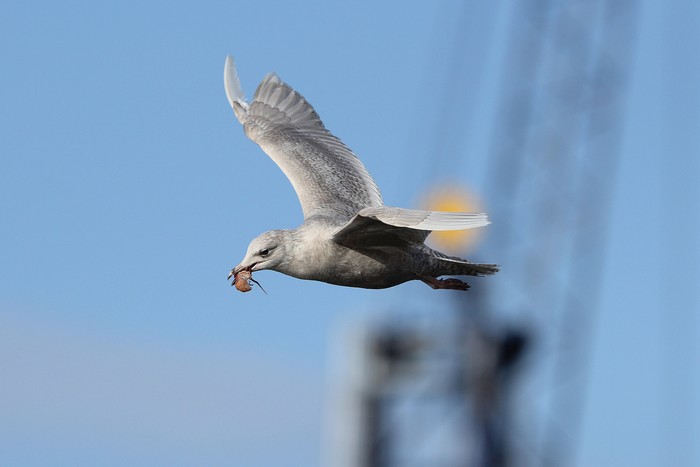
Perhaps the most interesting of the week’s eight Kumlien’s Gulls was the juvenile seen in Greater Manchester, at Bury on 4th. Another English new youngster was seen near Polgigga (Cornwall) on 2nd. Ireland’s two birds were both juveniles as well, still at Bray (Co. Wicklow) and Belfast Lough RSPB (Co. Antrim) to 3rd. Four Scottish birds were all confined to the Hebrides, where three (one 2w and two juveniles) were in Stornoway harbour, Lewis on 3rd and another young bird was on Barra on 4th.
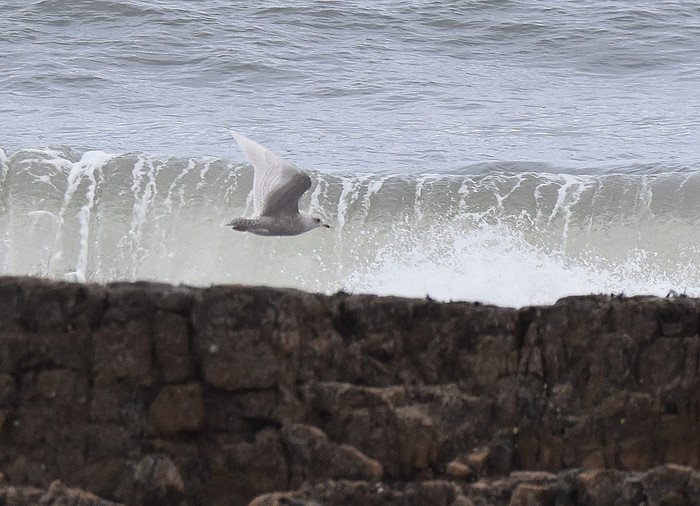
Iceland Gull numbers were almost identical to those seen last week - 155 birds noted across 45 British and Irish counties over the past seven days. Once again Scotland was a long way ahead of the rest, 65 birds in all from 11 counties/regions with the Outer Hebrides scoring over half of the nation’s total, at leats 39 present, including seven on Barra on 4th and eight in Stornoway harbour, Lewis on 1st. Irish birders added in a further 39 to the total, including at least 10 around Kerry and six still in Sligo town at the start of the week, with a further half dozen in Donegal.
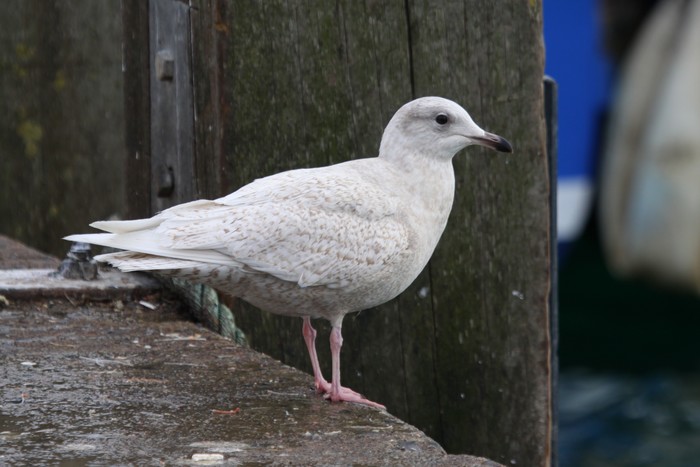
Around England, a further 55 or so were seen, including 19 in the northeast (maybe a dozen in Yorkshire’s four counties) with at least 13 in the southwest (including eight in Cornwall), a dozen in the northwest (including at least five in Lancashire) with six in the southeast and five in the Midlands. Wales scored just the one.
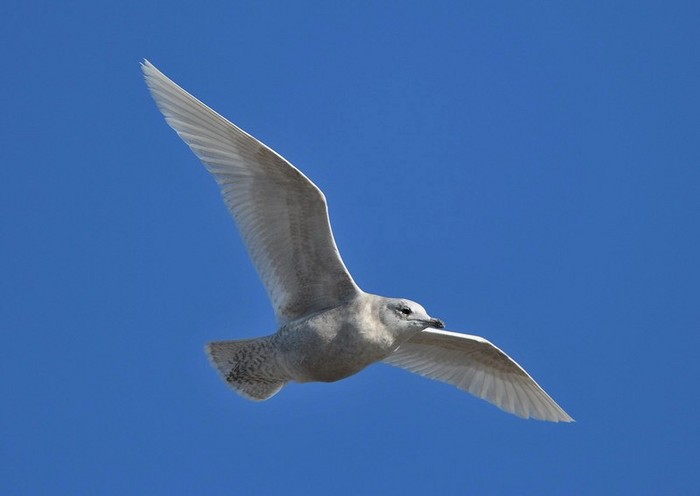
While their cuter looking white-winged allies held their own, Glaucous Gull numbers fell away a touch this week, down from over 130 or so last week to 109 in 37 British and Irish counties through the past seven days. Again, Scotland fared best and, again, it was the Hebrides that bumped the numbers up - out of 48 across the country, the Hebs provided a minimum 30, 24 of which were logged on 1st alone (including seven at Kilpheder, on South Uist). Ireland scored 12 birds in none coun ties while Wales managed seven in four. At least 46 birds were recorded in 17 counties, with the northeast tops again, with 16 birds in four counties (a minimum nine for North Yorkshire). East Anglia managed seven (five of them in Norfolk) with half a dozen each for the Midlands and southeast, while the southwest logged three in all.
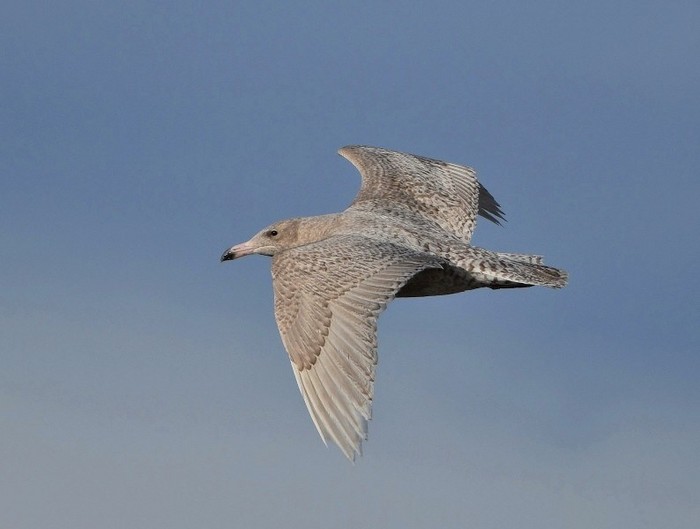
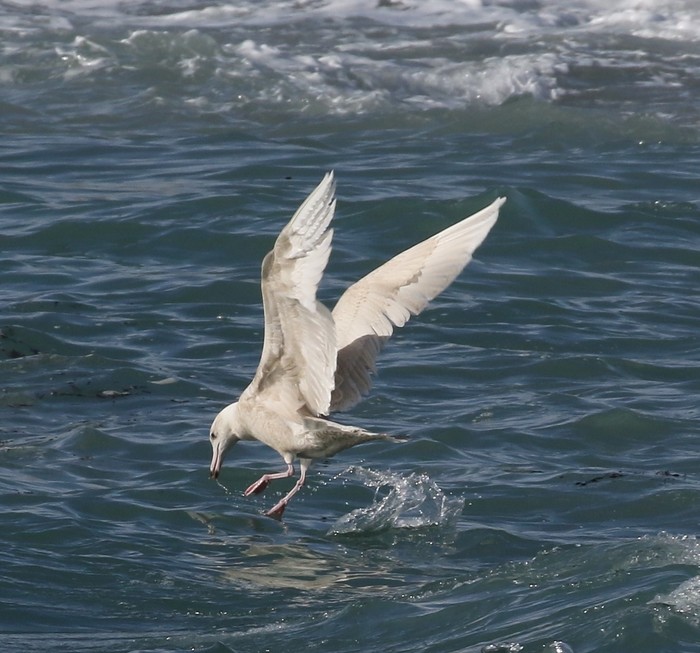
Lastly, the Forster’s Tern was back at Nimmo’s Pier (Co. Galway) on 4th - this super-reliable bird has been appearing in the area pretty much every winter since 2003, it may even be the bird noted around this superb site way back in 1996/’97…
Just failing to make the grade for a proper headline act was the juvenile white
Now here’s what is either the most extraordinary coincidence or a timely reminder for caution to be exercised when dealing with the species that follows on the east coast…
Ahead of “after-dark” news after the first draft of the review had been put to bed there was news that just failed to make the grade for a proper headline act ~ the bird in question being the juvenile white Gyrfalcon that paraded along the coast of Northumberland towards the start of the week just gone. Initially seen in the north of the county, at Bamburgh during the morning of 2nd it headed a fair way south as dusk approached later the same day, spending 10 minutes or so close to Cresswell Pond NWT before heading south again, this time towards Woodhorn.
The following day it wasn’t until the afternoon that another sighting was had, this time seen a little further to the north, at Druridge Pools (presumably frightening the living daylights out of the Pacific Diver as it went ~ now that would be a spectacular potential binocular combo). At that point in the proceedings it seemed as though all was well and the exciting prospect of a mainland Gyr was very real ~ birders in Northumberland eager to add the species to their county lists, the only record to date came in January 1845 when a grey morph was shot near Newcastle.
I’d already scribbled (in Review Vs.1) about the fly-in-ointment of a known (tagged, I think) falconer’s presumed hybrid (closely resembling a Gyr) further south in Northumberland. I’d also written that if it wasn’t the falconer’s hybrid, there was still the spectre of escapes…
…and on 7th, things went a bit pear-shaped. What was assumed to be the same white juvenile Gyr headed East Chevington during the afternoon but then news emerged of an escaped, transmitter-laden Gyr-(type?) was seen close by earlier in the morning at Cresswell. The chances of a wild Gyr being within the precise vicinity as a transmitter-carrying escape seem so slender but…who knows…
Norfolk birders would LOVE a chance of a seeing a wild Gyr ~ the most “recent” county bird was in October 1954 ~ but for now they (we, I) have to settle for the entertainment offered by another Pallid Harrier, as last week’s photographed juvenile settled down in the area immediately south of Wells, at New Holkham where it was seen daily, along the edge of the Crabbe Road (an area known more for rare geese than rare raptors) from 1st-7th.
Quite how long it has been roaming the fields and hedges of this part of the county is anyone’s guess, but it seems likely that it is new-ish to Norfolk; a few regular goose-watchers have wended their collective ways around these back lanes throughout the winter and she (a juvenile female) hasn’t shown herself until very recently.
A fascinating report of a second Norfolk Pallid Harrier cropped up on 2nd; the Crabbe Road bird was seen at around 9.30am and then, near Warham at around 1pm. In between times, a bird (also quoted as a juvenile female) was reported to be in a tree at Weybourne. Thoughts that this was the Wells bird seemed almost as fanciful as there being a second bird within the 14 miles (almost exactly, in a straight line). No one quite knows what’s what, the Wells area and off towards the Creakes seems to be the only haunts the original one likes and there’s been no further mention of the Weybourne bird (maybe that one was the Yorkshire bird, but why has she headed south now?). Intriguing…
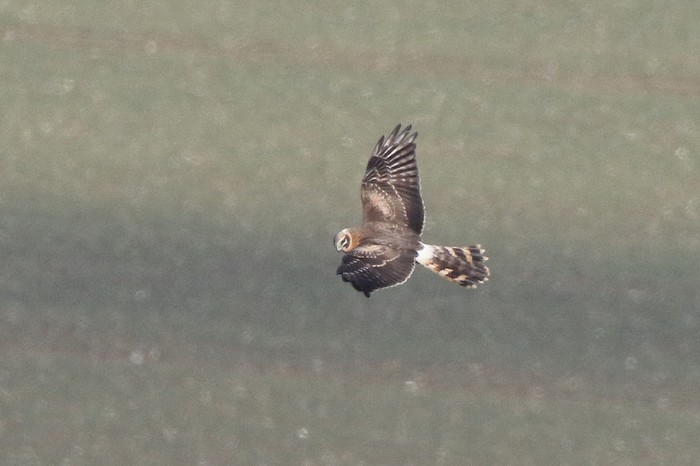
Until the afternoon of 7th the only Rough-legged Buzzards reported this week were both in Cambridgeshire where a juvenile was mentioned for Eldernell on 2nd and the adult male lurched towards the Lincolnshire border neat Thorney on 5th. On the review’s last day, the adult male was noted again in Haddiscoe Forest (Norfolk).
Singing chats are where its at this week ~ the lovely looking 1w male Desert Wheatear decided to give it a scratchy burst of song in south Devon this week (he was still in place until at least 7th) while visitors to Willow Tree Fen LWT in Lincolnshire could enjoy the dulcet tones of the first-winter male Bluethroat who lingered on site to 7th as well.
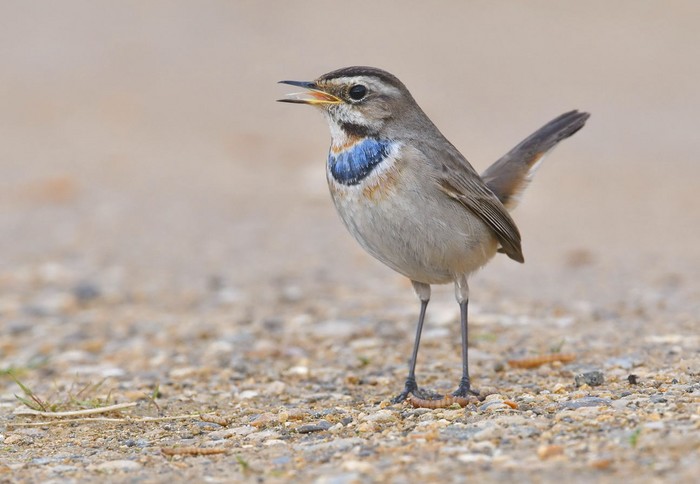
Dorset’s Hume’s (Yellow-browed) Warbler was seen to the first of the month on Portland the again on 7th. Neighbouring Devon hosted five of the week’s Yellow-browed Warblers with three at Staverton and singles at both Totnes and Dartmouth through the weekend. Cornish birders has at least four to go at, all singles, still around Camborne and Swanpool, with others at Penryn and Helston too. The wintering Yellow-browed remained near Kinver (Staffordshire) to 4th and in Ireland, the 11th for the week was at Dungarvan (Co. Waterford) to 2nd.
Last week’s three Richard’s Pipits are this week’s three Richard’s Pipits, the single at Arlingham (Gloucestershire) and the two at Abbotsbury (Dorset) all in place until 4th and it was ditto for the two Rose-coloured Starlings as well, remaining in Dorchester (Dorset) to 3rd and Crawley (West Sussex) to 7th.
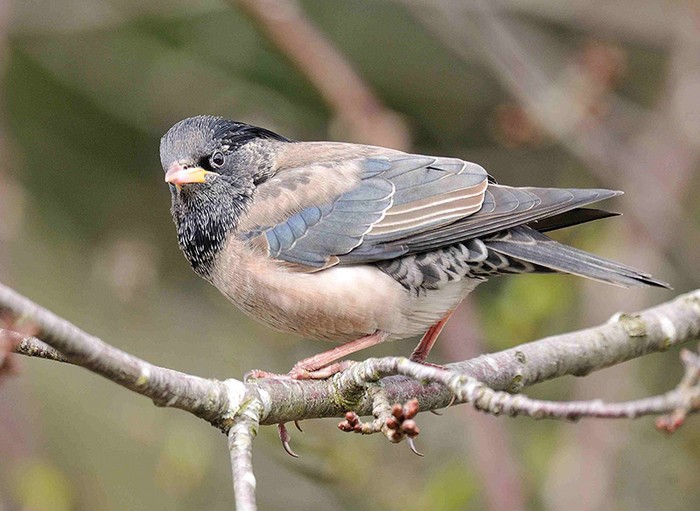
Another week, another strong showing from Great Grey Shrikes with 27 birds in 17 English counties along with another two in Scotland. As with most weeks, the highest regional tally was in southeastern England where eight birds were recorded; three were in Hampshire, two at different New Forest sites for much of the week with another still at Cranes Moor, near Burley until 4th. Two were together at Waltham Brooks SWT (West Sussex) on 2nd and there were two singles in Surrey, still on Frensham Common (to 2nd) and Thursley Common NNR (to 4th) while another lone bird remained at Wishmoor Bottom (Berkshire) for much of the week.
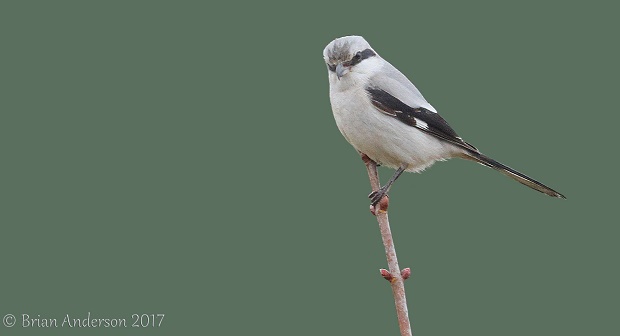
In the northeast, two birds were found in the Langdale Forest (North Yorkshire) on 6th with one still in the same county, near York to 6th at least. Singles remained at Deeping St. Nicholas (Lincolnshire) to 1st and Prestwick Carr (Northumberland) to 6th. East Anglia managed three, all still within a smallish Breckland radius; Norfolk Great Greys lingered at Grimes’ Graves and near Cockley Cley to 6th and 7th respectively while just over the border another was close to Elevden to 6th.
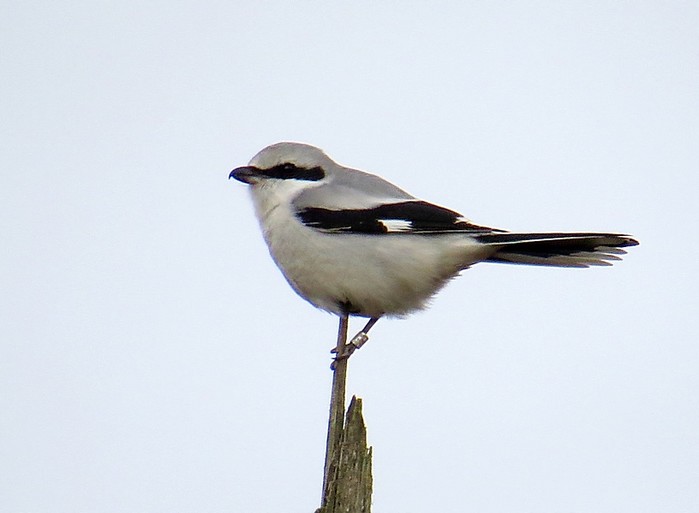
Moving to the Midlands next where four birds were seen, including at least two in the Forest of Dean (Gloucestershire), seen at Crabtree Hill on 2nd (with another record from the forest, at Speech Hill on 4th). One was still at Black Hill (Shropshire) to 4th and back at a favoured recent haunt was the bird at Owler Bar (Derbyshire) from 1st-7th. In the southwest, five different individuals were recorded; in Dorset singles were at Wareham Forest, Hartland Moor and Verwood at various points in the week, with one each for Devon (new near Barnstaple on 3rd) and Somerset (still around Middle Hill to 2nd). Heading north to the top left of England, where a new bird at Frodsham (Cheshire) was a good local bird from 4th while another remained at Great Broughton (Cumbria) all week. The last mentions this week go to Scottish singletons, at Bridgend, on Islay (Argyll & Bute) to 5th and still at Drumoak (Aberdeenshire) to 6th.
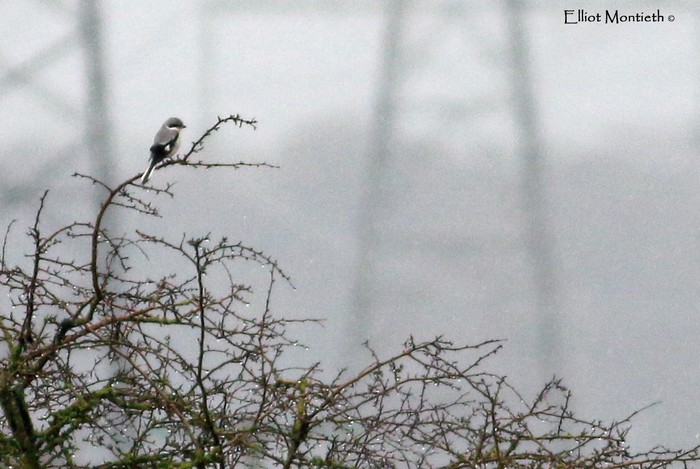
There’s more chance of seeing modesty and/or contrition from Zlatan Ibrahimovic than there is in having me count up 2k’s worth of widely spread Waxwings this week (as Booker T & The MG’s noodled, quite brilliantly, once upon a time) “Time is Tight”.
Actually, having a squizz through many dozens of records from around the country, it is clear that there’s been a mini clear out, numbers down by several 100 birds this week, with no three figure flocks anywhere as birds filter out of Britain. Regional highs are as follows (in ascending order of flock size); SW ~ 10 at Chudleigh Knighton on 5th; Ireland ~ 25 at Templepatrick; NE ~ 28 at Swillington on 3rd; Wales ~ 40 in Wrexham on 3rd; Scotland ~ 41 at Elgin on 6th; NW ~ 50 at Tarporley on 1st; Midlands ~ 61 seen at Duston on 5th; EA ~ 71 at Oulton on 4th; SE ~ 74 in East Malling on 4th.
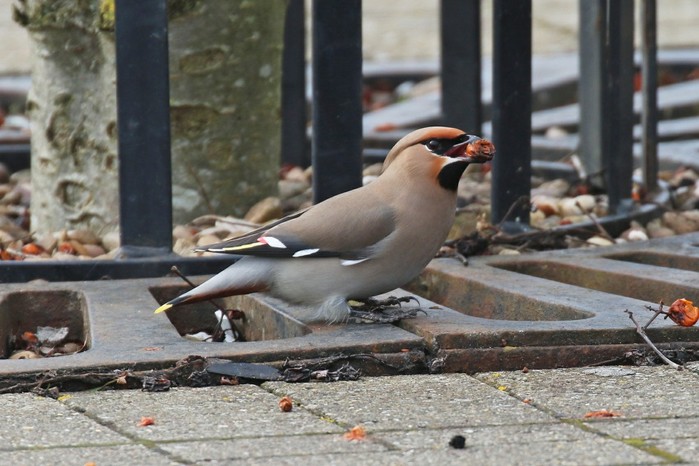
The wintering Little Bunting stayed put at Great Barford GPs (Bedfordshire) throughout the week until 7th while rounding things off this week, the report of a male ”Eastern” Stonechat (apparently a maurus Siberian) on Deringham Bog NNR (Norfolk).
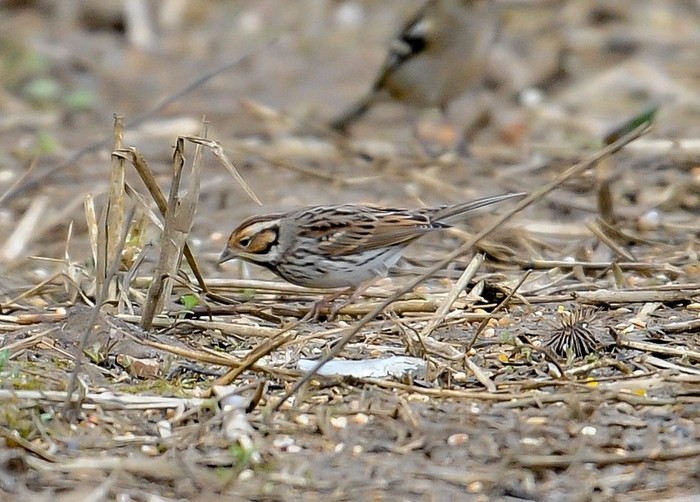
It caused a mini-flurry of interest when it was mentioned on 4th. Several normal Stonechats are known to frequent the area (there’s a new colour-ringing scheme in place there too) and the rarer option was singing and engaging with a female too.
Once upon a time, Norfolk and Suffolk were famed for white-rumped vagrant lookalikes (frequently reported as rarer eastern birds) so hopefully this will prove to be the real deal. Further searches on the day of discovery drew a blank though. Odd you’d think, given the behaviour noted originally.
A burst of early spring warmth is always welcome in March, especially when there are single digits on the calendar - surprises abound and should the weather do something it isn’t seemingly likely to, well there’s a few things to keep in mind.
Alpine Swift has been known to surface before the Ides of March and the odd Sardinian Warbler has too. Ditto the eternally lovely Great Spotted Cuckoo (March 11th is a good day for them). Crikey, there’s even been Short-toed Treecreeper - the Samphire Hoe bird of March 10th 2010.
However, rather than spring warmth and overshooting passerines and perhaps herons, there’s actually an early hint of maybe some chilly North winds next week and that could mean a wedge-tailed wonder from the frozen Polar regions - there have been four through the week that lies ahead.
Interestingly, there have been three big 1sts on March 8th. The first has become less and less significant over the past 30 years, demoted now to county rarity status, a telling reflection on the remarkable change of fortunes for Lesser Scaup. Our first acceptance came along in 1987 courtesy of a young drake was located and then heavily twitched on Chasewater Reservoir.
In 1994, the feeding station at Pennington Flash in Greater Manchester suddenly took on huge significance when the first-winter male Black-faced Bunting made himself known; his stay of in excess of six weeks was a huge draw and, for some, the first real opportunity for an always handy “grip-back” didn’t come along until last autumn’s Shetland bird.
Harder still for all those who weren’t birding 21 years ago to get back is Redhead - the Bleasby drake of 1996 was a huge breaking story in the Notts duck triangle at the time and the chances to see one since have been few and far between; what could have been a new drake was seen the following year, in neighbouring Leicestershire, at Rutland in February 1997 (it arrived just a few weeks after Norfolk’s bona-fide 1st records of both Canvasback and Hooded Merganser, both of which followed some brutal Eastern Seaboard snow and cold weather - you’d call it a Polar Vortex or Weather Bomb nowadays). That one/those two were followed only by the unusual summer record on Cape Clear in July 2003 - the once-accepted drake that was seen in Glamorgan in the winters of 2001 to 2004 was “NP’ed” as hybrid origins couldn’t be discounted.
There is light at the end of the Redhead tunnel though (giggity…) - France has recently hosted a rather fine looking drake, the only caveat being not his genetics bit whether he’d hopped le wire…if he hadn’t, then he’s in the system and it could be game on.
Lastly, no wishlist/predictions listing for the next seven days would be worth its salt if it didn’t mention that 16 day female Evening Grosbeak that attended a garden feeder at Nethy Bridge, in the Scottish Highlands in March 1980; even this one was before my time but I was assured this week by a man who definitely knows, that should the dreaded “S” word not have been invoked by the “powers that be” at the time, it would have been a very jolly (blocker) outcome for all.
For those slightly more senior tickers than me, that big-billed grosser must smart almost as much as that Spurn owl…
Mark Golley
8 March 2017
Share this story

